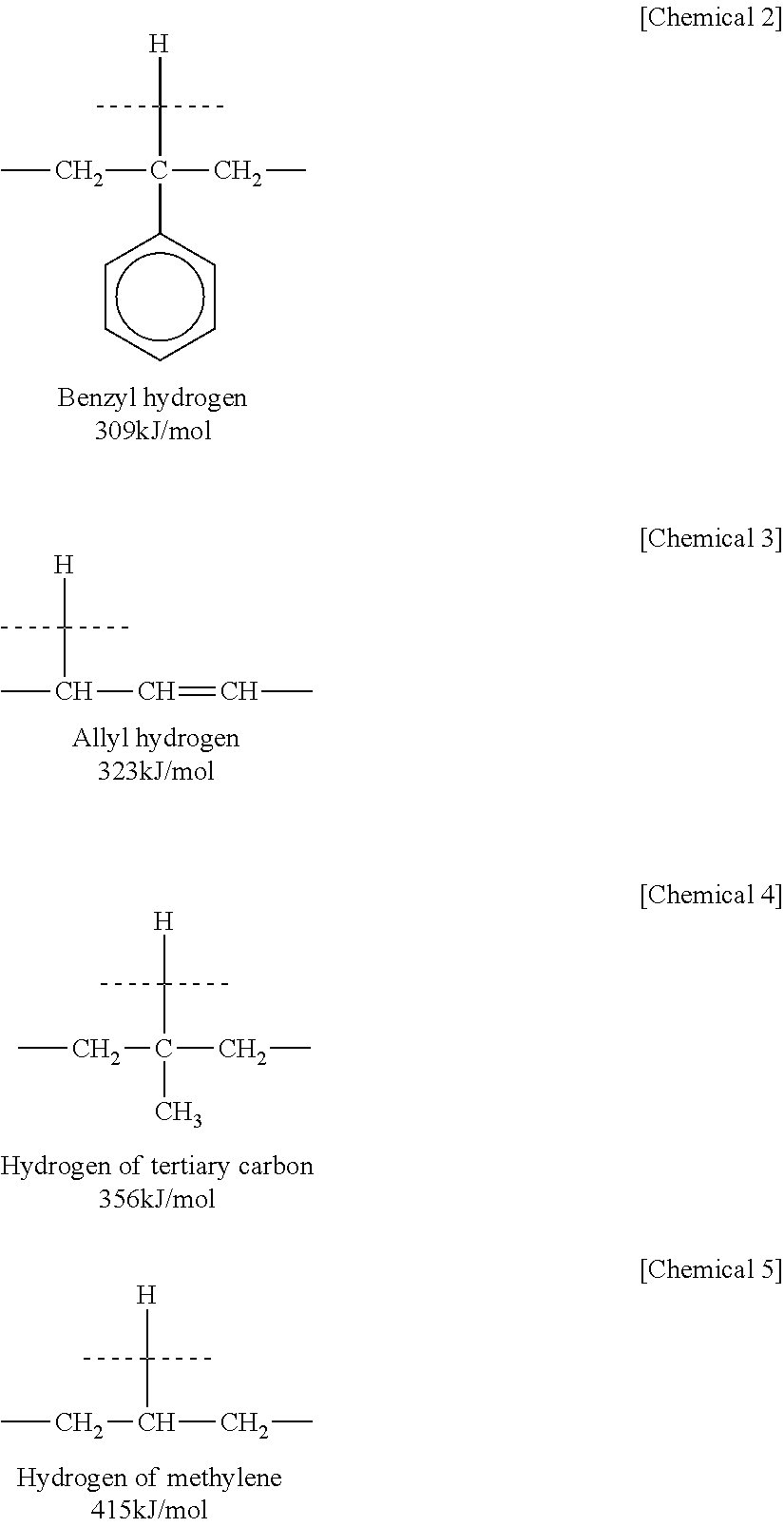Oxygen-absorbing resin composition
a technology of resin composition and oxygen-absorbing resin, which is applied in the field of resin composition, can solve the problems of insufficient thickness reduction of containers, inability to use inorganic oxygen absorbers in the field, and variety of inconveniences, and achieve excellent oxygen-absorbing capability, promote oxygen-absorbing components, and excellent oxygen-absorbing ability.
- Summary
- Abstract
- Description
- Claims
- Application Information
AI Technical Summary
Benefits of technology
Problems solved by technology
Method used
Image
Examples
synthesis example 1
[0136]Into a 300-ml separable flask equipped with a stirrer, a nitrogen introduction pipe and the Dean-Stark type water separator, there were fed 50 g of a methyltetrahydrophthalic anhydride containing 45% by weight of a 4-methyl-Δ3-tetrahydrophthalic anhydride (HN-2200: manufactured by Hitachi Kasei Co.) as the oxygen-absorbing component and 72.5 g of a stearylamine (manufactured by Tokyo Kasei Kogyo Co.) as the amine component, and the reaction was conducted for about 6 hours in a nitrogen atmosphere at 120° C. to 180° C. while removing water that was formed. From the IR spectrum of the obtained reaction solution, the synthesis was confirmed relying on the disappearance of a peak at 1780 cm−1 stemming from the methyltetrahydrophthalic anhydride and on the appearance of a peak at 1708 cm−1 stemming from the imide group of the synthesized product. The synthesized product was regarded to be an oxygen-absorbing component (B2).
synthesis example 2
[0137]The synthesis was conducted in the same manner as in Synthesis Example 1 but using 18.4 g of a metaxylenediamine (manufactured by Tokyo Kasei Kogyo Co.) as the amine component to obtain an oxygen-absorbing component (B3).
3. Preparation of the Oxygen-Absorbing Resin Pellets
[0138]By using a twin screw extruder equipped with a granulating facility (TEM-35B: manufactured by Toshiba Kikai Co.) with its barrel being set at a temperature of 200° C., the base resin A was mixed with various constituent components, and the mixture thereof was extruded in a stranded manner to obtain the resin composition pellets thereof. The constituent components were introduced in such a manner that the solid pellets were dry-blended with the polyester resin, and the liquid components were added through an opening formed in the way of the extruder by using a liquid feeder (NEMO pump: manufactured by Heishin Sobi Co.).
4. Method of Measuring the Amounts of Oxygen Absorbed by the Resin Compositions
[0139]V...
example 1
[0140]The base resin A1 was blended with 1% by weight of the oxygen-absorbing component B1 and 10% by weight of the oxidation promotion component C1 to prepare resin composition pellets thereof according to the method mentioned above, and the amount of oxygen absorbed by the resin composition (cc / g) was calculated. The result was as shown in Table 1.
PUM
| Property | Measurement | Unit |
|---|---|---|
| glass transition temperature | aaaaa | aaaaa |
| glass transition temperature | aaaaa | aaaaa |
| bond dissociation energy | aaaaa | aaaaa |
Abstract
Description
Claims
Application Information
 Login to View More
Login to View More - R&D
- Intellectual Property
- Life Sciences
- Materials
- Tech Scout
- Unparalleled Data Quality
- Higher Quality Content
- 60% Fewer Hallucinations
Browse by: Latest US Patents, China's latest patents, Technical Efficacy Thesaurus, Application Domain, Technology Topic, Popular Technical Reports.
© 2025 PatSnap. All rights reserved.Legal|Privacy policy|Modern Slavery Act Transparency Statement|Sitemap|About US| Contact US: help@patsnap.com



